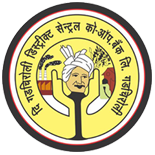- Pradhan Mantri Jan Dhan Yojana (PMJDY)
- LPG subsidy scheme (PAHAL)
- Mahatma Gandhi National Rural Employment Guarantee Act (MGNREGA)
- Pradhan Mantri Awas Yojana (PMAY)
- Pradhan Mantri Fasal Bima Yojana (PMFBY)
- National Social Assistance Program (NSAP)
- Pradhan Mantri Ujjwala Yojana (PMUY)
- Mid-Day Meal Scheme (MDMS)
- National Rural Livelihood Mission (NRLM)
- Atal Pension Yojana (APY)
- Direct Benefit Transfer for LPG (DBTL)
- Digital India program
- Beti Bachao Beti Padhao Scheme
- Swachh Bharat Abhiyan
- National Health Insurance Scheme (Ayushman Bharat)
- National Food Security Act (NFSA)
These are just some of the major schemes under the DBT program. There are many more schemes across various sectors, such as education, healthcare, agriculture, and social welfare, that are being implemented through DBT.
Open a bank account: You need to have a bank account in your name to receive DBT benefits. If you do not have a bank account, you can open one by visiting the nearest bank branch or through online banking channels.
Link your bank account with Aadhaar: To receive DBT benefits, you need to link your bank account with your Aadhaar number. You can do this by visiting the bank branch or through online banking channels.
Enroll for DBT: Once your bank account is linked with Aadhaar, you need to enroll for DBT by visiting the concerned department or agency. You can also enroll for DBT through the National Scholarship Portal (NSP) or the Public Finance Management System (PFMS) portal.
Provide your bank details: While enrolling for DBT, you need to provide your bank account details such as bank account number, IFSC code, and bank name.
Receive DBT benefits: Once you are enrolled for DBT, the benefits will be directly transferred to your bank account. You can check the status of your DBT payments through the NSP or the PFMS portal.
In summary, to avail of the DBT service in a bank, you need to have a bank account, link it with Aadhaar, enroll for DBT, provide your bank details, and receive the benefits directly into your bank account.
What is DBT?
DBT stands for Direct Benefit Transfer. It is a scheme launched by the Government of India to directly transfer subsidies and benefits into the bank accounts of beneficiaries.
What are the benefits of DBT?
Increased transparency and accountability
Reduced leakage and improved efficiency
Aadhaar-linkage ensures correct beneficiary identification
Reduces delay in delivery of benefits
Beneficiaries get payments directly into their accounts
What schemes use DBT?
Many government schemes use DBT including PM-KISAN, PAHAL for LPG subsidy, MNREGA payments, National Social Assistance Program, scholarship schemes, etc.
How does DBT work?
The sponsoring agency prepares a list of beneficiaries and their Aadhaar numbers. This is sent to the DBT portal. The portal verifies the data and transfers the benefit amount directly into the linked bank account of the beneficiary.
What do beneficiaries need to get DBT?
Beneficiaries need to have an Aadhaar number, bank account and their phone number linked with their Aadhaar and bank account to receive DBT payments. Some schemes may have additional requirements.
How can one check DBT payment status?
Beneficiaries can check their DBT payment status on the official DBT Bharat portal or app using their phone number or Aadhaar number. Some schemes also allow status checks via SMS.
Who can one contact for DBT related issues?
For DBT related grievances, one can contact the scheme’s department helpline. One can also visit the nearest common service centre for assistance on DBT.


